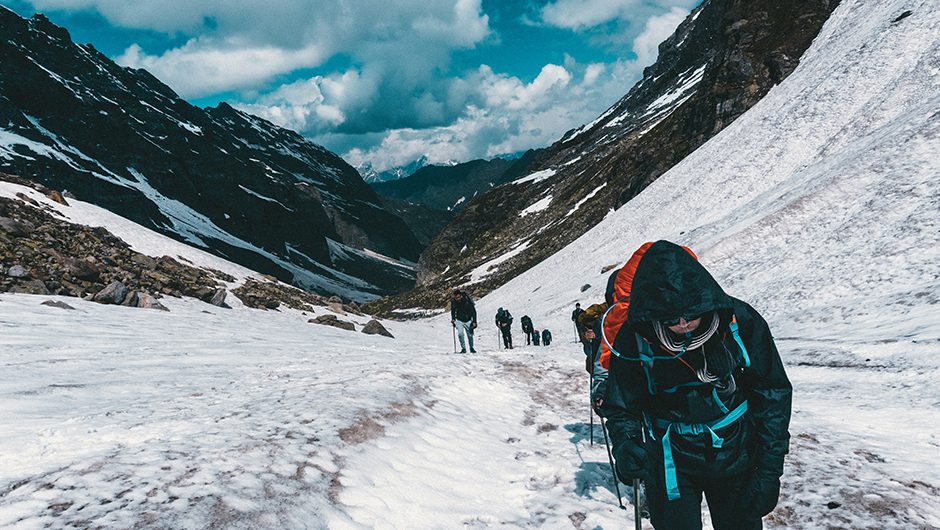Rency Thomas
Latest posts by Rency Thomas (see all)
- Trekking Post Covid 19 – All You Need to Know - June 2, 2020
- Positive Evolution in Indian Adventure Travel – Post Covid 19 - June 1, 2020
- All about the Trekking Poles – Uses & Usages - May 20, 2020
“There are no shortcuts to any place worth going.” – Beverly Sills
Trekking is one of the most popular outdoor activities in the world. In India, the number of people trekking to the Himalayas is increasing year after year. There are many new exciting routes getting opened every year, as the popular trails are getting more and more crowded. It is one such activity which can be mastered quickly and every time you go to those mountains you starve for more.
There are few mistakes which most of the people take lightly in their treks and learn them in a very hard way, most of the time even hurting or injuring themselves. Here in this guide, we will discuss those simple mistakes and how to avoid them easily to have a wonderful trekking experience every time you go to the mountains.
Explore: Popular Treks in India
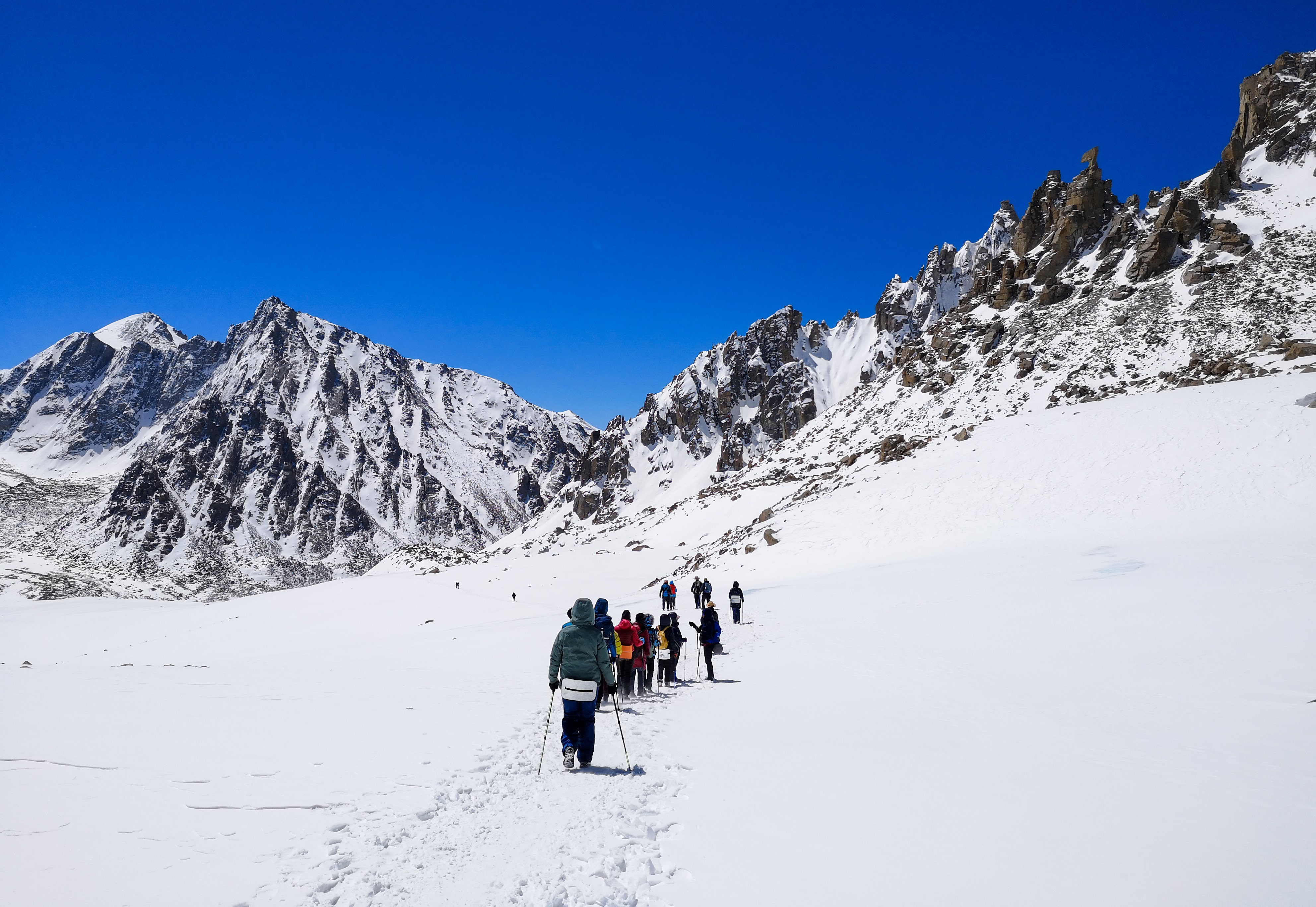
1. Underestimating Altitude
Yes, altitude and the problems related to it are real. The biggest mistake we make is we underestimate this hidden danger. Also most of the time the confusion is how much altitude is high altitude? The end result of this confusion and underestimation is usually ending up to AMS which completely ruins the overall trekking experience and sometimes even aggravates fatal situations like HAPE (High Altitude Pulmonary Edema) or HACE(High Altitude Cerebral Edema).
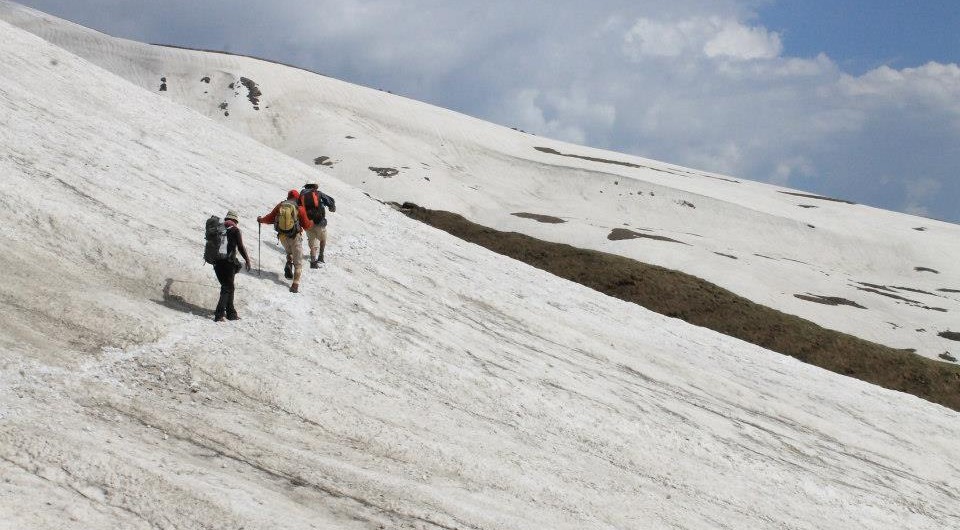
How to Avoid?
Many people show symptoms of AMS even at 1200m/3960ft, and many get acclimatised very fast even at 3500m/11550ft. Acclimatization is completely dependent on person to person and the physical wellness of an individual at a particular point in time. Few simple practices which can avoid AMS, in case you are directly flying into a high altitude place, like Leh in India, Lhasa in Tibet or even Bogota in Columbia, are taking complete rest for 24 to 48 hrs and drinking lots of fluids. An ideal height gain while trekking above 3000m/10000ft is 300m/1000ft of sleeping altitude in a day and a rest day every third day. As a rule of thumb climb high and sleep low for better acclimatization.
Altitude scale:
High altitude: 2438m/8000ft – 3658m/12000ft
Very high altitude: 3658m/12000ft – 5487m/18000ft
Extremely high altitude: 5500m+ m /18000ft+ ft
Must Read: What are the important steps to take to Acclimatize better?
2. Hypothermia & Frostbite
It doesn’t need to be a winter trek to worry about the cold weather and the risks associated with it. Depending on where you are trekking, it can be cold throughout the year, which can make you feel colder, uncomfortable and give you serious illness associated with it. To top it up the mountain weather can be very unpredictable and risky.
How to avoid?
Proper clothing in the proper way combined with the right food and hydration is the success mantra to keep hypothermia and frostbite away. When I accurately say proper clothing, I mean a three-part layering system. A base layer with good wicking properties to wick perspiration away from your skin, a mid-layer that insulates you from cold and an outer shell layer to protect from rain and wind. By layering, you can be comfortable throughout the trek by removing and adding the layers to avoid overheating or getting colder. The layers have to be loose and comfortable by avoiding very tight dresses. Cotton must be strictly avoided and has to be replaced by synthetic or wool. Cotton has the lowest wicking properties and takes the longest time to dry in case of getting wet.
Extremities of the body like ear, nose, cheeks, fingers, and toes are more prone to frostbite when exposed to sub-zero temperatures and cold wind. Protect your hand by wearing fleece gloves as inner and waterproof/windproof shell gloves as outer layer, neck, nose, and cheek by neck gaiters, ears using a headband or a balaclava. Protect your feet by a good quality worn in shoes along with synthetic or woollen socks inside. It’s a good practice to take care of your feet every day after the hike, back in the camp by cleaning, drying and changing wet socks.
Your body needs more energy to fight against the cold, so it’s equally important to nourish your body with healthy food and fluids. You may not feel like eating or drinking in cold conditions, so it’s a good practice to keep some energy giving munchies and water within reach to keep nibbling and sipping regularly throughout the day.
Must Read: How to Prepare for a High Altitude Trek
3. Wearing Improper Dress
Many trekkers tend to wear too much cotton or denim. I have seen trekkers struggling to complete a trek in tight jeans, fully wet after a river crossing. Some even dare the extreme cold with thick leather jackets.
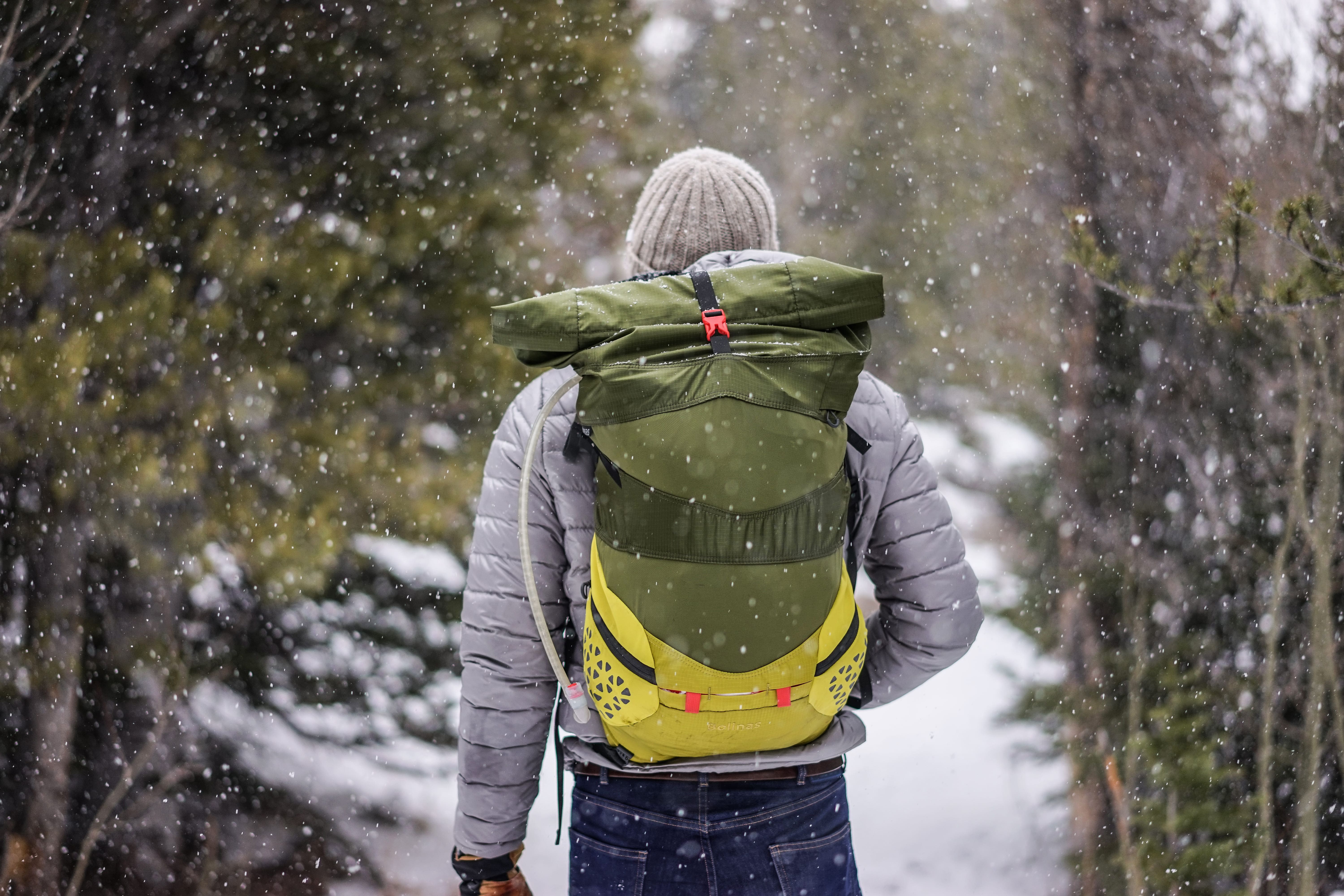
How to avoid?
There is a misconception that jeans are warm since it is a thick material. The basic thing to understand is denim is mostly 100% cotton. A jeanswear once wet will never dry properly during the entire trek which can lead to hypothermic situations. Also changing jeans is not easy and quick, as it is for trekking pants. Jeans are a complete no when it comes to outdoors, it can be a killer dress, as it also restricts movement compared to a good synthetic trekking pant.
A leather jacket cannot be an alternative for a down jacket or an insulating layer. It can come handy as a windcheater but considering the weight of the material, it’s better to avoid it and have a proper breathable wind/rain cheater for trekking. It’s always layering, one single layer of the jacket will not protect you from the bone-chilling cold in the mountains.
4. Blisters or Shoe Bite
Blisters are one of the most common problems seen while trekking, a few hours down the trek and you’re already suffering to walk due to blisters and shoe bite.
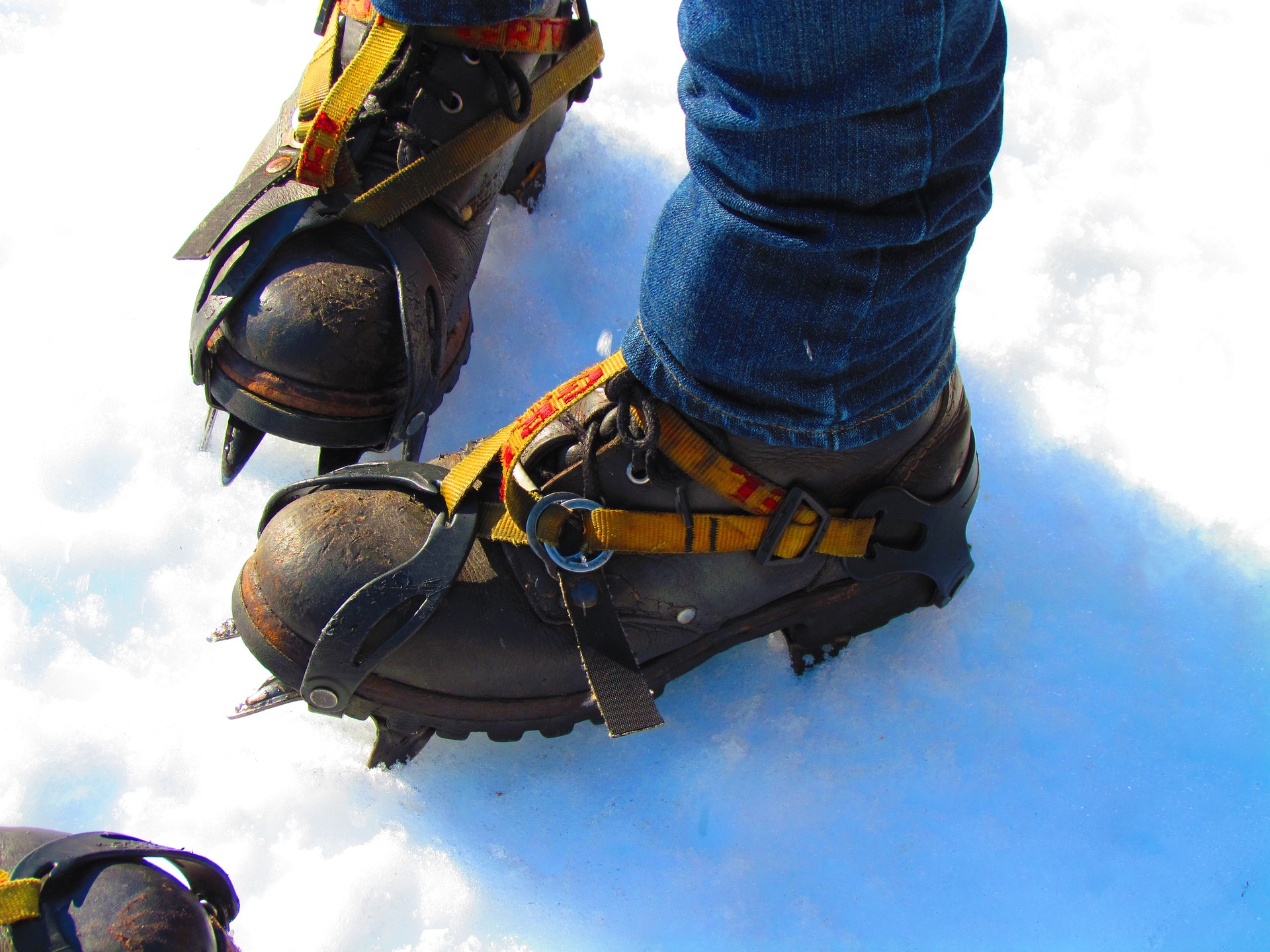
How to avoid?
Major reasons behind blisters are wearing new shoes before the break-in, shoes of not the right fit or size, socks with low or no wicking properties. When you walk for long hours your feet start to swell and sweat, the sweat makes the socks wet and stick to the skin which in turn starts to rub against the inside of your shoes to create blisters.
As a rule of thumb, never wear a new pair of shoes for the first time on a trek. In case you need new boots for the upcoming trek, ensure to plan and buy it well in advance to break in properly before the actual trek. Always choose shoes of the correct size and fit, wear shoes and do trail inside the store itself to self check the comfortability before buying. Try to keep your feet as dry as possible and wear good quality socks with wicking properties like woollen or synthetic so that it wicks the sweat away from your skin.
5. Cramps & Fatigue
Cramps, feeling tired, dizziness and fatigue is not an unusual thing while trekking. Many even have to discontinue the trek or become impossible to enjoy the whole experience due to this. Most of the time the reason behind this is dehydration and losing too many minerals.
How to avoid?
A person is said to be dehydrated when the fluid loss from the body is more than the intake. During a trek depending upon the place and difficulty fluid loss happens through your breathing, urination, and sweating. In colder places with high elevation, every time you breathe or sweat the dry air absorbs more moisture from it. The more you sweat and urinate, the more you lose fluids and minerals along with it, eventually leaving you dehydrated.
A wide-mouth water bottle or a hydration bladder is a must for any trek. Hydration system may get a little cranky in cold conditions but is a great alternative for bottles. Continuous supply of water is the mantra, a healthy human will need approximately half a litre of water for every hour of moderate trekking. Mixing water with little rehydration salts (electrolytes) or by nibbling some healthy snacks in between along with water will compensate your mineral and fluid loss from the body. A well-hydrated body copes well with tiredness, muscle fatigue and acclimated much better and faster. Keep a close watch on your urine colour it should be always pale, if not that means you are not hydrating well.
6. Packing Too Much – Heavy Backpack
In every group of trekkers, you can see a few struggling to even carry their own backpacks because of being too heavy. Few struggles just because it’s not packed well or the backpack is not the right one for the particular trek. The funny part is, after all this struggle by the end of the trek they realise they have not used even 10% of what they have packed.
How to avoid?
Carry only what is most necessary, the pair of dress you are wearing plus 1 spare t-Shirt and a lower is enough to handle a 2-week long trek. Pack only the most essentials needed, to layer yourself, you seldom need an extra pair. Purchase a backpack specially designed for trekking, other normal ones do not serve the purpose well. A 50L trekking backpack is enough to pack everything needed, including the sleeping bag for a person on a 2-week trek. Carrying a light backpack will help you to enjoy the trek more efficiently and comfortably.
7. Avoiding Trekking Poles
Many consider trekking poles as an additional burden and underestimates its purpose. Few feel using a trekking pole can affect their style status and others may think them to be inferior.
How to avoid?
In fact, a trekking pole serves a lot of purposes and can be a life saviour by providing stability in rough and tough terrains. It acts as a third leg and reduces the stress on your knees significantly. It can be a trusted buddy in the tricky river crossings and daunting downhills. Having a trekking pole makes your trekking experience very much enjoyable and less tiring.
8. Packing Too Many Toiletries
Wet wipes that can last a lifetime, a complete makeup kit, deodorant, big shampoo bottles, hair conditioners, complete shaving kit, and a big tube of toothpaste; just to name a few contents in a rookie trekkers kit of toiletries. They mostly have very urban reasonings for packing all this, not realising the fact that they would rarely be using any of this during the trek.
How to avoid?
The fact is, you do not need a large number of toiletries on a trek. A small tube of soap, a similar quantity of toothpaste, a small sunscreen lotion, a toothbrush and a toilet roll is all you want to survive a trek. Every other material would just increase the unwanted weight of your backpack. Wet wipes are not biodegradable and are very heavy, they are strictly not to be used on a trek. Above everything, these non-essential things just increase the weight of your backpack and eat up the much-required space for the essential items.
9.Starting Late And Speeding The Pace
One thing you notice in the trekking group is that the morning starts always gets late. You can see a few already ready with the backpack to start the trek and few still packing the bags or having breakfast. After a late start, it is a race to reach the destination on time.
How to avoid?
In the mountains, the valleys get dark earlier than in the plains as the Sun goes behind the mountains much before the actual sunset. Leaving late in the morning means you have already lost a fair amount of daylight, which means you will have to speed up your paces unwantedly just to reach the campsite before dark. Trekking in darkness is no fun and it gets very cold as soon as the Sun goes behind the mountains.
It is ideal to pack and leave the camp as early as possible so that you have enough time to trek in the daytime. This will help you to walk at your comfortable pace with enough rest and time to appreciate nature. For a good trekking experience, it is advised to walk at a comfortable steady pace by avoiding unwanted speeding up or running, which can get you tired and worn out very fast.
10. Not Using Sunscreen And Sunglasses
A common habit noticed in many trekkers is that they shy out to use sunscreen and sunglasses. There is an ignorant thought process that the dark skins do not need sunscreens, the result is sunburns and skin irritations. In snow and icy conditions not using sunglasses can even bring temporary loss of vision called snow blindness.
How to avoid?
The UV rays are very strong up in the mountains and unfortunately, they don’t know to distinguish white skin from the dark. UV rays directly on the skin can create severe irritations and burns. It is advised to use sunscreen generously on every place where the skin is exposed. Also for effective protection, it is good to reapply whenever the cream gets visibly worn away from the skin.
Nobody wants to get blind in the middle of an interesting and challenging trek. Snow blindness can be very painful and burning with red eyes, in other words, it’s just sunburned eyes. Snow reflects more than 80% of the UV rays and in high altitudes, the sun’s UV rays are stronger than in lower places. It is very important and mandatory to wear good quality dark coloured sunglasses, covering the complete eyes, every time you are in the mountains during daylight.
11. Forgetting The Essential Medicine and Menstrual Products
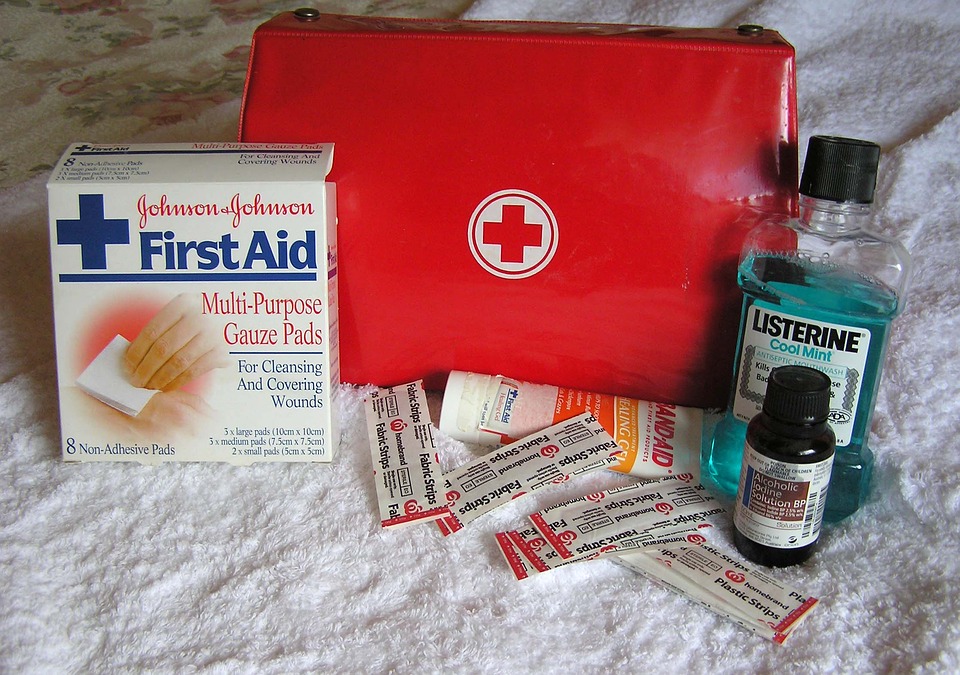
I have seen trekkers reaching the remote villages high up in the mountains and realising that they have left their medicines back in the home.
In the middle of the trek, a lady comes up to the guide and asks help to arrange a sanitary pad for her friend as they never expected the periods during the trek.
How to avoid
Understand most of your prescription medicines, especially the specific brands may not be easily available outside your own city. The remote mountain towns would rarely have a pharmacist who keeps all kinds of medicines. Even if you find one, it is near impossible for him to procure the medicine, as per your need, before you leave for your trek. It is imperative that you have all your prescription medicines carried with you from your home. Always carry a little extra, so that in case your trip gets delayed due to any unforeseen circumstances you are not running out of your much-needed medicines. It is also a good habit to carry a small simple personal first aid kit, always while on the trek.
As a rule of thumb, always expect to get your periods while on the trek. Keeping this in mind, make it a practice to carry menstrual products which may also include the medications if any, to be taken with on every trek. Even if you do not get your periods on the trek, it’s good to have, as you can always share it with the person in need.
Conclusion
“Give me six hours to chop down a tree and I will spend the first four sharpening the axe.” – Abraham Lincoln

There are many simple mistakes like the few topics mentioned above, which people make in treks mostly due to ignorance or because of lack of guidance. In the mountains even simple mistakes can be fatal, it is important that you read a lot, understand and discuss with experts, to prepare yourself well before venturing out or signing up for adventures. That will ensure a safe, enjoyable and memorable experience.

